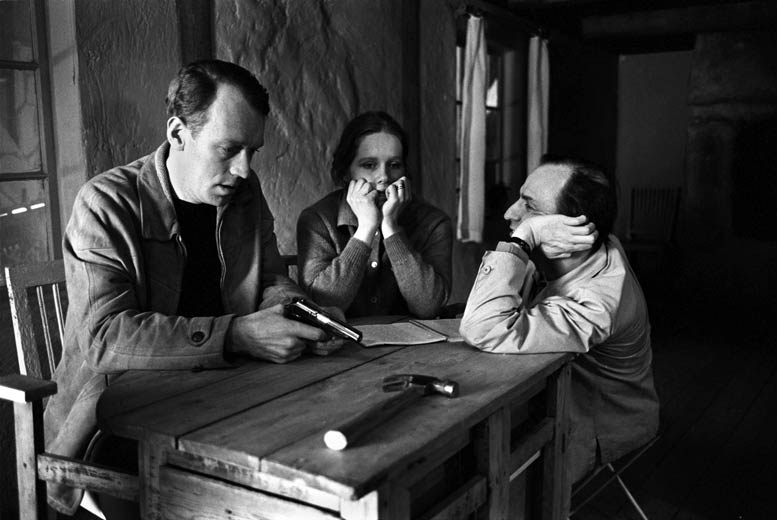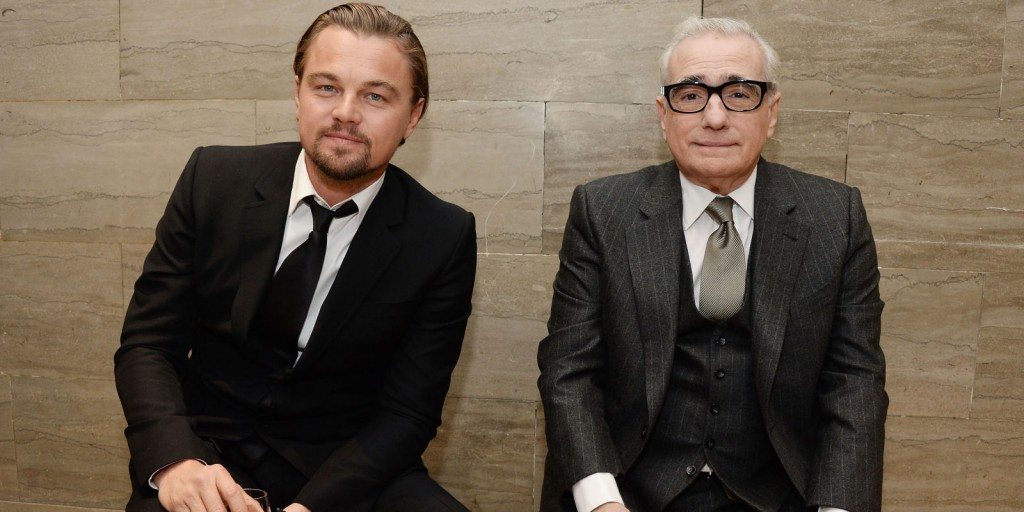10. Francois Truffaut and Jean-Pierre Leaud
 “You see him, and you see an entire side of French cinema coming at you” and as usual words always fail to appreciate the grandeur of a monument, that is Jean-Pierre Leaud. Now 72, every wrinkle on his body is a reminder of the phases French Cinema had to undergo from early 60’s to the present. There never has been or will be, a duo that could come close to the intimacy Truffaut and Leaud shared. Despite the director’s death when Leaud was 41, he had spent around 30 years of his life with Truffaut being a father figure. Their first collaboration, ‘The 400 Blows’ is one of the cornerstones of French Nouvelle Vague, and also introduced the character of Antoine Doinel, considered to be Truffaut’s own alter ego and Leaud was selected because of his resemblance. I remember everyone acclaiming Boyhood’s achievement a few years ago, and it reminds me of how important Truffaut’s Antoine Doinel cycle is, representing the life of a man over 20 years, exploring his intimate moments instead of the important ones. Doinel is an enigma, he is the culmination of two identities, Truffaut and Doinel and I don’t think cinema will ever come across something more honest.
“You see him, and you see an entire side of French cinema coming at you” and as usual words always fail to appreciate the grandeur of a monument, that is Jean-Pierre Leaud. Now 72, every wrinkle on his body is a reminder of the phases French Cinema had to undergo from early 60’s to the present. There never has been or will be, a duo that could come close to the intimacy Truffaut and Leaud shared. Despite the director’s death when Leaud was 41, he had spent around 30 years of his life with Truffaut being a father figure. Their first collaboration, ‘The 400 Blows’ is one of the cornerstones of French Nouvelle Vague, and also introduced the character of Antoine Doinel, considered to be Truffaut’s own alter ego and Leaud was selected because of his resemblance. I remember everyone acclaiming Boyhood’s achievement a few years ago, and it reminds me of how important Truffaut’s Antoine Doinel cycle is, representing the life of a man over 20 years, exploring his intimate moments instead of the important ones. Doinel is an enigma, he is the culmination of two identities, Truffaut and Doinel and I don’t think cinema will ever come across something more honest.
9. Sergio Leone and Clint Eastwood
Maybe Leone through his movies did not ask questions like Bergman or study the degrading characteristics of the human race like Kubrick or deport us into an existentialist realm like Tarkovsky but what he showed was that cinema is the grandest form of communication. Capturing the wide landscapes of the desert as easily as the drops of sweat on the enemy’s face, Leone picked off from where Ford had left and applied European aesthetics. Leone’s most popular work was the ‘Dollars Trilogy’, and at the center of it was the most important anti-hero of the 20th century. The Man With No Name a.k.a Clint Eastwood. Turning Toshiro Mifune’s lovable ronin into a hard-boiled lone ranger, Eastwood complimented Leone’s vision with his own undaunted flair. Though they only collaborated for the trio, and had a fallout over Eastwood’s rejection to play an Irish cop in ‘Once Upon A Time In America’, both of them were responsible for a massive cinematic revolution that helped the counterculture movement in Hollywood to a great extent.
8. Alfred Hitchcock and James Stewart

‘Its A Wonderful Life’ and by this time there was nobody who could be so ground to earth in the portrayal of their characters as James Stewart. This is probably why he flourished under the direction of the Master of Suspense, Alfred Hitchcock. Stewart was seen as the archetypal common man and his inclusion in Hitchcock’s murder mysteries had a great impact on the audiences, as this gave more credibility to the the unpredictability factor of the director’s stories. Starting with ‘Rope’, Hitchcock’s most underappreciated piece, Stewart was cast as the former housemaster of two young aesthetes who kill their friend to commit the perfect murder. This was followed by the masterpiece Rear Window, where Steward slipped into the chair of a common man who confronts his fantasies and fears, after witnessing a crime. This is the pinnacle of their partnership and was followed by ‘The Man Who Knew Too Much’, a remake of his own 1934 film of the same name. Then came ‘Vertigo’ in ’58 and ended their partnership, because the film you now see on Best Movies lists was a flop, as critics and viewers disliked Hitchcock’s emphasis on psyche instead of mystery.
7. Andrei Tarkovsky and Anatoly Solonitsyn

Anatoly Solonitsyn was Andrei Tarkovsky’s favorite actor and would have featured in the Russian auteur’s ‘Nostalghia’ and ‘The Sacrifice’, if it wasn’t for his untimely death, probably the most tragic conclusion to a great director-actor collaboration. Though Solonitsyn doesn’t get the appreciation most actors on this list do, I believe it’s because even the greatest can’t help but succumb under Tarkovsky’s shadow, such was his influence on his own films. Tarkovsky discovered Solonitsyn after looking for an unknown actor to play the title role of ‘Andrei Rublev’ in the feature of the same name. It is impossible to point out a certain collaboration and claim that is better, because he appeared in Tarkovsky’s finest and four of the greatest films of all time. Solonitsyn’s debut was followed by playing Dr Sartorius in ‘Solaris’, the physician in ‘The Mirror’ and the Writer in ‘Stalker’. Though they couldn’t beat his spectacular performance in Rublev, his inclusion was a proof of how highly Tarkovsky regarded him.
6. Ingmar Bergman and Max Von Sydow

“We understood each other. Whatever good has happened to me in my life regarding film and theater, my thanks go to him.” – Max Von Sydow on Ingmar Bergman
I think this is one of those relationships where none of them would have been as successful if it wasn’t for the other. Now, you may argue that Bergman was a genius and wouldn’t have had any difficulty because his characters were a medium to express himself. I think there’s a point where a director can have complete faith in an actor, and this allows the director to challenge his own self, to dig deeper as he’s finally found the perfect instrument to express his thoughts. Sydow and Bergman both gained international acclaim for the monumental chess scenes in ‘The Seventh Seal’. The collaborations to follow, ‘Wild Strawberries’, ‘The Virgin Spring’, ‘Through A Glass Darkly’, ”Winter Light’ saw Von Sydow in supporting roles. It was not until 1968 in Bergman’s most underrated film ‘Hour Of The Wolf’ and the two thematic similar movies, ‘Shame’ and ‘The Passion of Anna’ that Von Sydow played major roles. But that never affected their partnership, every character in a Bergman film is essential to the message he wants to convey.

